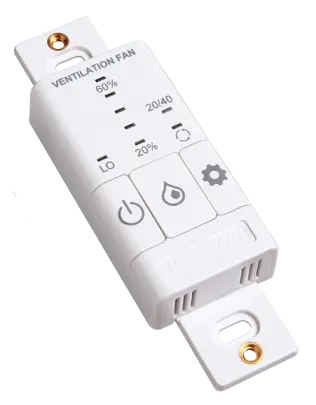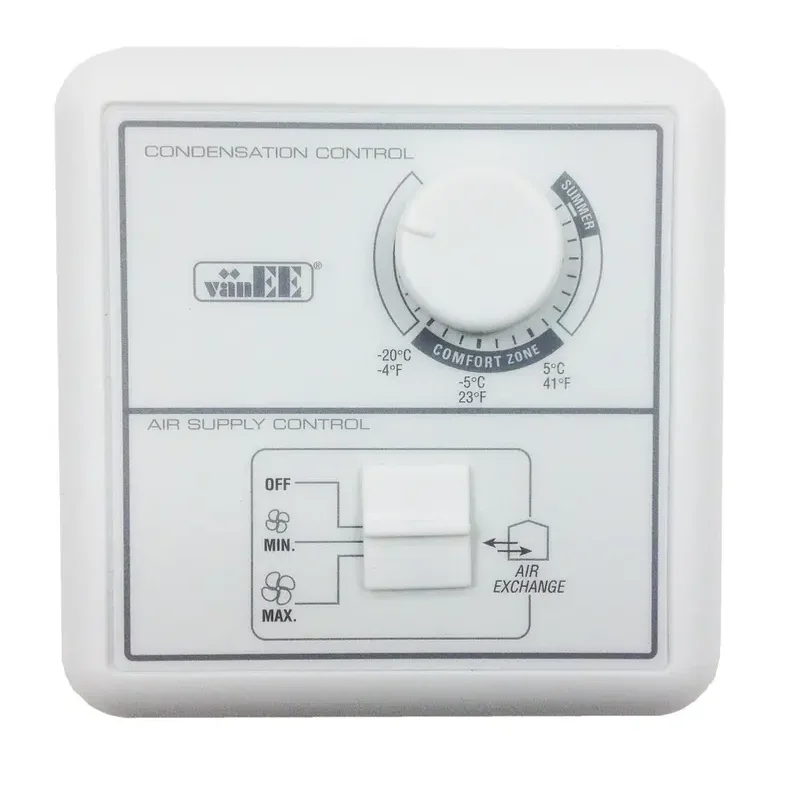FANTECH MDEH1 DEHUMIDISTAT CONTROL
Item Number: 40172, FANTECH MDEH1 DEHUMIDISTAT CONTROL
2-wire mechanical dehumidistat, low voltage
Application
2-wire low voltage dehumidistat control with rotary dial. Just turn the dial to set the humidity level. Multiple units can be used with Fantech HRVs. Install in bathrooms, kitchen or laundry for easy access.
What is an Air Exchanger?
An Air Exchanger otherwise known as an HRV (Heat Recovery Ventilator) or an ERV (Energy Recovery Ventilator), is a whole house mechanical ventilation system. It is typically connected to your existing furnace return duct and contains two high-efficiency motors. The supply motor draws fresh air in from the outside while the exhaust motor pushes stale indoor contaminated air outside. The two airstreams never mix when passing through the HRV or ERV cores.
What is the difference between an HRV and an ERV?
In an HRV, the two air steams are separated by a heat recovery core, which will transfer only heat energy. In the winter, the warm indoor air passes through the HRV core as it’s being exhausted and warms up the incoming fresh outside air. In the summer, the cycle is reversed and the cool indoor air cools down the hot outdoor air recovering the energy. HRV’s will control excess humidity in cooler seasons by introducing outdoor air into your home.
In an ERV, the two air streams are separated by an energy recovery core, which will transfer both heat and moisture energy. In the winter, the warm indoor air passes through the ERV core as it’s being exhausted and warms up the incoming fresh outside air. As well, it will redirect approximately 50% of the indoor moisture back into your home. In the summer, the cycle is reversed and the cool indoor air cools down the hot outdoor air recovering the energy. In addition the ERV will redirect approximately 50% of the outdoor moisture (humidity) back outdoors. Thus, ERV’s are a better choice in all but the most northern climates for providing year-round comfort.
Benefits of Air Exchangers:
- Air Exchangers bring a continuous supply of fresh outside air into your
- Air Exchangers exhaust environmental contaminants for improved indoor air quality.
- Air Exchangers save energy in the winter by recovering heat from exhaust air.
- Air Exchangers save energy in the summer by recovering cool indoor air from exhaust air.
- Air Exchangers help prevent mould and mildew.
- Air Exchangers help minimize odours and cooking residue.
- Air Exchangers can reduce harmful Radon Gas levels where active soil depressurization is unlikely to be successful.
Downloads:
401282 MDEH1 Installation Eng-Fr.pdf








Reviews
There are no reviews yet.